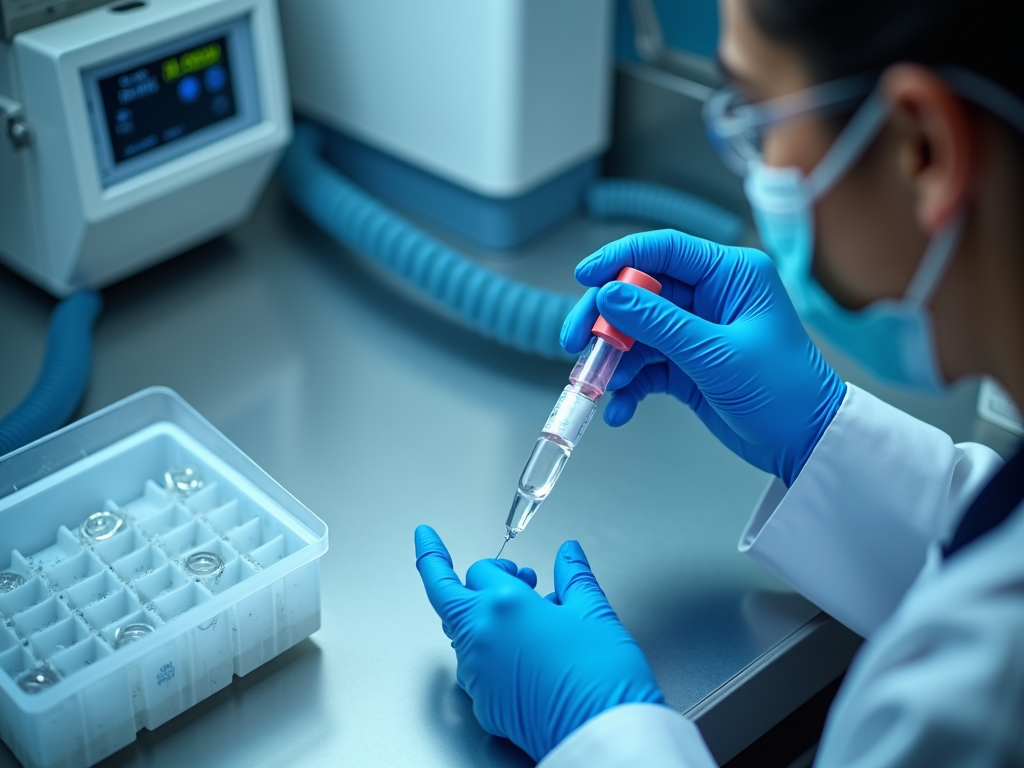Sperm Banking: What You Need to Know
March 11, 2025, 7:32 a.m.
Sperm banking offers a lifeline for individuals facing medical treatments that might affect their ability to have kids. Whether it’s cancer treatment or another health challenge, this process can preserve your fertility. In this article, we’ll cover everything about Sperm Banking: What You Need to Know.

What is Sperm Banking?
Sperm banking, or sperm cryopreservation, means collecting and freezing sperm to use later. It’s a smart choice for anyone who wants to keep their fertility options open before treatments like chemotherapy. The frozen sperm can stay viable for years, giving hope for future family planning.
This isn’t a new idea—it started back in the 1950s. But today, it’s easier and more reliable thanks to better technology. People often turn to sperm banking before cancer treatment, a vasectomy, or even if they have a condition that might lower sperm count over time.

Why is Sperm Banking Important?
Imagine being told you have cancer. It’s overwhelming enough without worrying about your future family. Cancer Treatment and Fertility: What You Need to Know starts with this: treatments like chemotherapy or radiation can harm sperm production, sometimes permanently. Sperm banking steps in as a safety net.
The stats are eye-opening. Up to 50% of men who go through chemo or radiation might face infertility, says the American Cancer Society. Banking sperm before treatment gives you a shot at biological kids later. It’s not just for cancer patients—some bank sperm before military deployment or risky jobs.
The Sperm Banking Process
Here’s how it works:
- Step 1: Consultation. You meet a fertility specialist. They’ll explain everything and check your health.
- Step 2: Sample Collection. You provide a sperm sample, usually by masturbation in a private room.
- Step 3: Freezing. The lab freezes your sample with liquid nitrogen, keeping it safe for years.

The process is straightforward but needs planning. You might give a few samples to ensure enough healthy sperm. If masturbation isn’t an option—say, due to injury or illness—doctors can use methods like electroejaculation or surgery to collect sperm. Once frozen, it’s stored securely until you need it.
Emotional Considerations
Sperm banking isn’t just physical—it’s emotional too. Deciding to do it while facing a health crisis can feel heavy. John, a 32-year-old cancer survivor, said, ‘I was scared about chemo, but banking sperm gave me one less thing to stress over. It was hope in a vial.’

It’s okay to feel unsure or even embarrassed. Talking to a counselor or joining a support group can help. Emily, whose partner banked sperm, shared, ‘We didn’t know what the future held, but this gave us control. Now, we’re expecting our first child.’ These stories show you’re not alone.
Fertility Preservation After Chemotherapy
What if you’ve already had chemo? There’s still hope. Fertility preservation after chemotherapy depends on how much sperm production remains. If it’s low, a procedure called testicular sperm extraction (TESE) might work. It’s a surgery to pull sperm straight from the testicles.

Here’s a quick look at your options:
| Option | What It Is | Pros | Cons |
|---|---|---|---|
| Sperm Banking | Freezing sperm before treatment | Easy, affordable | Needs to be done pre-chemo |
| TESE | Surgery to extract sperm post-treatment | Works if sperm production is low | Invasive, costly |
| IVF | Combines sperm and eggs in a lab | High success with banked sperm | Expensive, multiple steps |
A fertility specialist can check your situation. Timing matters—chemo types and doses affect outcomes. Acting early with sperm banking is ideal, but post-treatment options exist too.

IVF and Sperm Banking
Sperm banking pairs perfectly with IVF (in vitro fertilization). Here’s the deal: IVF takes eggs and sperm, mixes them in a lab, and creates embryos. Banked sperm works just as well as fresh sperm—success rates are nearly identical, per the Society for Assisted Reproductive Technology.
The process has steps: egg retrieval, fertilization, and embryo transfer. It’s not cheap, and it can take a few tries, but for many, it’s worth it. One dad said, ‘Using my banked sperm for IVF felt like a miracle after cancer. We have twins now.’ Support from your team makes it smoother.

Summary
Sperm banking is a game-changer for anyone facing treatments that threaten fertility. It’s about taking control and keeping your options open. Whether it’s before cancer treatment or after, Fertility Preservation offers hope. Talk to a specialist, weigh your choices, and know there’s support out there.